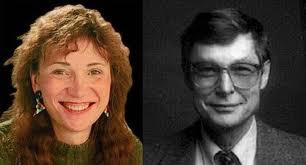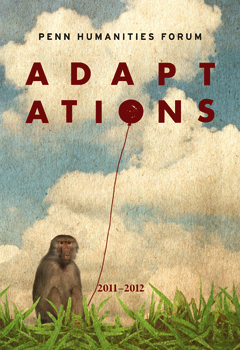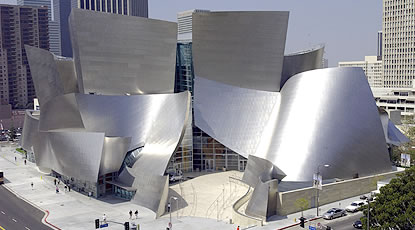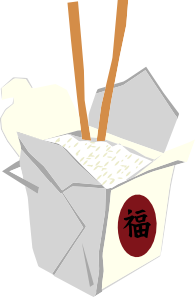Serendip is an independent site partnering with faculty at multiple colleges and universities around the world. Happy exploring!
Kaye's notes week 5--final save
I. coursekeeping
conferences
uploading web events
next week: Act II--De/Meaning Sex and Gender
takes a more biological approach to sex and gender, and examines sexual and anatomical diversity within the animal kingdom. most of you have taken gen/sex courses in humanities/social sciences, but few in natural sciences. some of you have expressed an eagerness to learn more about biological perspectives, others have expressed trepidation.
reassure you that the texts we have selected do not require in-depth knowledge of developmental biology, endocrinology, evolutionary biology, anatomy, pathology, but are written for diverse audiences and in diverse styles. For next week:
Joan Roughgarden. Introduction, Chapter 1: “Sex and Diversity," Chapter 2: “Sex vs Gender,” Chapter 3: “Sex within Bodies,” Chapter 4: “Sex Roles," and Chapter 8: “Same Sex Sexuality." Evolution's Rainbow: Diversity, Gender, and Sexuality in Nature and People. Berkeley: University of California Press, 2004 (available for purchase in BMC Bookshop or free on-line through ebrary).

- born in Paterson, NJ,
- BA in Bio and Phil from Univ. Rochester, PhD in bio from Harvard
- faculty member at Stanford since 1972
- came out as a transsexual woman at age 52. Prior to that time she was identified as a male named Jonathan Roughgarden. In essence, Jonathan Roughgarden left on sabbatical; Joan Roughgarden returned to the same job and title
Olivia Judson. Chapter 12: “Eve’s Testicle.” Dr. Tatiana’s Sex Advice to All Creation. New York: Metropolitan Books, 2002: 187-211, 256-8 (in our password-protected file).
Popular Science Book: Judson has a PhD in evolutionary biology from Oxford, is a journalist, who writes for the Economist, Nature, the Guardian, and blogs for the NYT, she will be speaking at UPenn on Oct 19, "Time Travel Safari. Adventures in the History of Life"

John Alcock. "Changing priorities in changing social environments." Animal Behavior, An Evolutionary Approach, 9th ed. Sunderland, MA: Sinauer Associates, 2009, 168-181 (in our password-protected file).
(Textbook: section of Chapter 5 focuses on how biology intra-acts with social and natural environments, introduces you to testosterone, estrogen, progesterone and the varied effects that these hormones can have on reproductive behavior in different animals and in different settings; first look at the figures and read their captions, then return to the text, and refer to figures; don't get hung up on experimental techniques that you don't understand)
What Females Want and What Males Will Do. Nature (DVD; April 5, 2008--on reserve). Part I: barn swallows, female choice, monogamy, testosterone (start at 15’; end at 22’); gelada primates, “handicap principle” (start at 30.49’; end at 32.59’); testosterone (start at 48.45’; end at 51.55’). Part II: duck phallus/oviduct, “cryptic choice”, defense against forced copulation (start 40.49’; end 44.49’)
II. Anne
III. Break
IV. Kaye--return to our 4th "p" word: potential
I did not want the section on disability to focus only on the burdens of impairments, but to also highlight what impairments can reveal about unrecognized abilities, the plasticity of our brains, and the adaptability of people as social and biological organisms.
Last week we explored the home as a place and home as a body, and I hope that this week's readings expanded your perceptions of place and body.
See What I'm Saying. The Extraordinary Powers of Our Five Senses is written by psychologist Lawrence Rosenblum, on the faculty at UCal Riverside. He begins his book with "Daniel Kish (mountain biker) is now the president of the World Organization for the Blind, an association dedicated to helping blind individuals and their sighted friends and family understand the capabilities of the visually impaired." (10) and argues that not only do bats, dolphins, and unsighted people use echolocation, but that all people can develop that skill. To navigate the world, we use more than just visual cues.
Did any of you test your echolocation abilities?
My struggles with white noise....
Let's think more about the sounds of spaces. What can we learn from architectural acousticians that might be relevant for our exploration of gender and sexuality?
Is it possible to create expansive, intimate bodies or selves or even spaces?
Let's look the Walt Disney Concert Hall in LA


*Looking at the pix (of LA concert hall), I'm reminded of the tendency of my children and their friends to build nests indoors and outdoors--with blankets, or cardboard boxes, or hollows in trees, or depressions in the ground.*
What about performance spaces closer to home: in Philly, in the Tri-co?
The second chapter in See What I'm Saying that we asked you to read complements the first. Chapter 1 presented the ways that we can use hearing to "see" spaces, while Chapter 10 presents the ways that we can use our vision to "see" speech.
- McGurk effect
- http://youtube/jtsfidRq2tw
- this raises the fascinating question of whether certain senses are dominant. When we receive contradictory information from our eyes and our ears, what is privileged?
- When our bodies/homes provide contradictory information, what dominates? Can they be integrated? Can this help us understand trans-identities?
-
Do we use more than visual cues to perceive gender and sexual orientation? What might these be?
In Chapter 1, Rosenblum draws attention to the technical challenges of capturing sound for movies and TV shows. That different rooms and sets not only look different, but sound different. And that sound designers strive for coherence between the visual and audio inputs by using blankets and baffles and dubbing and mixing, so that the audience feels like it is IN the scene.
Sandy Berman, a sound designer: "There's nothing like the real thing. While it might seem elaborate, and the audience might not consciously hear a difference, I really believe that the audience can feel the difference." (p17)---and audience members do complain.
Let's consider incoherence that goes beyond a mismatch between visual and auditory spaces, but exists in psychosocial spaces. What might you feel when there is a disconnect not between visual and audio inputs, but between body and gender, or between gender and sexual orientation, or between your psychological and a physical home? What if you are the audience? If you are the performer?
Write for 3' to capture the thoughts that rise up for you.
Please speak out of the silence...what are you "seeing" here? - points of light
- we may not need to see clothes or hair or faces or bodies to make gender assignments
- Rosenblum discussed "point-light" videos to show how we can "read" the motion of jaws, lips, foreheads, cheeks to "see" what someone is saying.
- Point-light videos have also proved instructive for larger scale motions, like walking, and can give us visual cues about gender, size, and emotional state
- http://www.biomotionlab.ca/Demos/BMLwalker.html
- Take-home message:

Our sensory perceptions of people and places are multi-modal.
What does this mean about the complexities of passing?

What information do we use to categorize people/events or to make judgments?
What information do we let pass?
- pass (v.)

- late 13c. (trans.) "to go by (something)," also "to cross over," from O.Fr. passer, from V.L. *passare "to step, walk, pass," from L. passus "step, pace" (see pace (1)). Intrans. sense of "to go on, to move forward, make one's way" is attested from c.1300. Figurative sense of "to experience, undergo" (as in pass the time) is first recorded late 14c. The meaning "to be thought to be something one is not" (especially in racial sense) is from 1935, from pass oneself off (as), first found 1809. The general verb sense of "to be accepted as equivalent" is from 1590s. Sense of "to go through an examination successfully" is from early 15c. Meaning "decline to do something" is attested from 1869, originally in cards (euchre). In football, hockey, soccer, etc., the meaning "to transfer the ball or puck to another player" is from c.1865. Colloquial make a pass "offer an amorous advance" first recorded 1928, perhaps from a sporting sense. Pass up "decline, refuse" is attested from 1896. Pass the buck is from 1865, said to be poker slang reference to the buck horn-handled knife that was passed around to signify whose turn it was to deal. Pass the hat "seek contributions" is from 1762. Pass-fail as a grading method is attested from 1959.
- pass (n.)

- "mountain defile," c.1300, from O.Fr. pas "step, track," from L. passus "step, pace" (see pace (1)). The meaning "written permission to pass into, or through, a place" is first recorded 1590s, from pass (v.). Sense of "ticket for a free ride or admission" is first found 1838.
- also--hall pass, pass/fail,
questioning the accuracy of those perceptions...
depending on what "labels" we use (1.jpg) or
what "browser" we're using (Firefox, internet explorer),
whether we've cleared our caches (remember those "memory palaces"?!)
on browsers and in our own lived/embodied memories



Comments
Post new comment